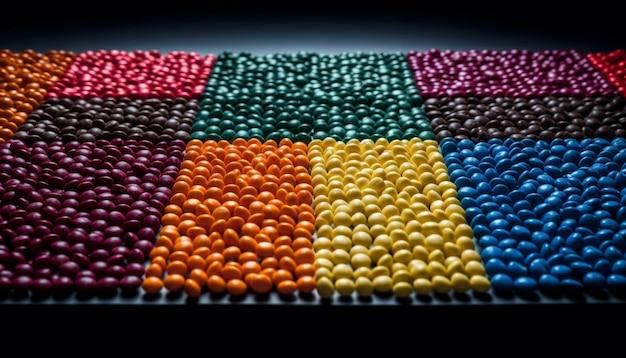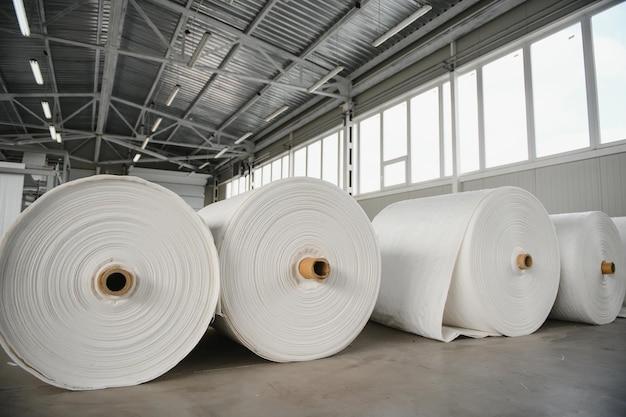Are you looking to add a personal touch to your polypropylene creations? Polypropylene, a versatile and durable plastic material, is commonly used for various DIY projects such as reusable grocery bags, webbing, and more. But how can you decorate polypropylene to make it truly your own? In this blog post, we will explore different techniques, including sublimation, heat pressing, iron-on, and printing with inkjet or laser printers.
If you’ve ever wondered if you can sublimate on polypropylene or how to iron polypropylene fabric, we’ve got you covered. We will answer commonly asked questions like “Can you put permanent vinyl on plastic?” and “Can you heat press polyester bags?” with easy-to-follow instructions and expert advice. Whether you’re a seasoned crafter or a beginner, this blog post will help you unleash your creativity and transform plain polypropylene into personalized masterpieces.
So, grab your favorite polypropylene projects and let’s dive into the exciting world of decorating polypropylene DIY style!
How to Add Flair to Your Polypropylene Décor
Polypropylene is a versatile and durable material that has become increasingly popular for DIY enthusiasts. But let’s face it, plain polypropylene can be a bit dull. So, if you’re tired of the same old look, it’s time to take matters into your own hands and add some pizzazz to your polypropylene décor!
Get Your Creative Juices Flowing
1. Paint your way to perfection
One of the easiest ways to decorate polypropylene is by using acrylic paint. Choose vibrant colors that match your style and start painting away! Just make sure to clean the surface thoroughly beforehand to ensure proper adhesion. This way, you can turn a plain polypropylene item into a statement piece that will catch everyone’s attention.
2. Show off your sticker game
Stickers aren’t just for kids anymore. They can make your polypropylene décor look fun and whimsical. Whether you opt for cute animals or trendy designs, stickers are an easy and affordable way to personalize your items. Plus, they’re removable, so you can switch things up whenever you feel like it without any commitment!
3. Spruce it up with stencils
If you’re looking for a more intricate design, stencils are your new best friend. Choose a pattern that speaks to you, secure it in place, and apply spray paint or acrylic paint over it. The result? A professional-looking design that will make your polypropylene décor stand out from the crowd.
Take It to the Next Level
4. Decoupage for the win
Decoupage is a fancy word for gluing paper onto surfaces, but trust us, it’s anything but basic. Find some beautiful patterned napkins or wrapping paper, cut them into shapes or strips, and adhere them to your polypropylene item using decoupage glue. With this technique, you can transform a plain storage box into a work of art that would make even Picasso jealous!
5. Embrace the power of fabric
Polypropylene and fabric may not seem like a natural match, but when they come together, magic happens. Use fabric glue to attach your favorite patterned fabric to polypropylene surfaces. Instantly, your boring lampshade becomes a boho dream, and your plain chair gains a touch of elegance. The possibilities are endless!
6. Don’t forget the power of accessories
Sometimes, all you need is a little extra something to take your polypropylene décor to new heights. Add some bling with adhesive rhinestones, tie ribbons around handles, or attach decorative hooks to hang small items. Accessories are like the cherry on top of a perfectly decorated cake – they add that finishing touch that completes the look.
With these creative ideas, you can turn your polypropylene items from drab to fab. So, get out your paints, stickers, stencils, and fabrics, and let your imagination run wild. Remember, decorating with polypropylene is not just about transforming your space—it’s about adding your personal touch to make it truly yours. Happy decorating!
FAQ: How To Decorate Polypropylene DIY
What plastic can be sublimated
Plastics that are commonly used for sublimation include polypropylene, polyester, and certain types of polyurethane. These plastics have a special coating that allows the sublimation ink to transfer and bond with the surface.
What materials can be sublimated
Aside from plastic, various materials can be sublimated, such as fabrics like polyester, ceramic tiles, metal plates, and even wood. This versatility makes sublimation a popular choice for creating personalized and unique designs on different surfaces.
Can you put HTV on 100% polyester
Yes, you can use Heat Transfer Vinyl (HTV) on 100% polyester. Polyester is known to withstand the heat required for HTV application, allowing you to create stunning designs on your polyester garments or other polyester items.
How do you iron polyester
Ironing polyester requires a bit of caution. Set your iron to a low heat setting, usually around 300 degrees Fahrenheit (150 degrees Celsius). Make sure to also use a press cloth to protect the fabric. Gently glide the iron over the polyester, avoiding any excessive heat or pressure to prevent melting or damage.
How do you decorate polypropylene
Decorating polypropylene can be accomplished using methods like sublimation, heat transfer, or even permanent vinyl. Sublimation is a popular choice for polypropylene as it allows for vivid and long-lasting designs. Heat transfer entails using heat and pressure to apply a design onto the polypropylene surface. Permanent vinyl can be cut into shapes and adhered to polypropylene for added decoration.
Can you heat press on polyurethane
Polyurethane can be heat pressed, but it’s crucial to follow the specific instructions provided by the manufacturer. Different types of polyurethane may require different heat settings, pressure, and duration. Always test a small area before proceeding with the full heat press to ensure the material can withstand the process.
Can you iron on reusable grocery bags
Reusable grocery bags are typically made from polypropylene, which is a heat-sensitive plastic. Ironing may cause the bag to melt or warp, so it’s best to avoid ironing directly onto reusable grocery bags. Instead, focus on other decoration methods like sublimation or heat transfer.
Can you sublimate on polypropylene webbing
Yes, polypropylene webbing can be sublimated. The process involves applying sublimation ink to the webbing’s surface and using heat to transfer the ink, resulting in a permanent and vibrant design. Polypropylene webbing is commonly used for straps, belts, bags, and other durable items.
Can you put permanent vinyl on plastic
Yes, permanent vinyl can be applied to plastic surfaces. However, certain types of plastic may require special preparation or priming for better adhesion. Make sure the plastic surface is clean and dry before applying the permanent vinyl. Applying heat with a heat gun or hairdryer can also help the vinyl adhere better to the plastic.
Can you print on polypropylene
Polypropylene can be printed on using various methods. Sublimation, screen printing, and digital printing are popular choices for printing on polypropylene surfaces. These techniques ensure a high-quality and long-lasting print on the plastic material.
Can you do sublimation on plastic
Yes, sublimation can be done on plastic surfaces, including certain types of polypropylene. Sublimation involves transferring sublimation ink onto a special coating on the plastic through heat and pressure. This creates vibrant and durable prints with excellent color reproduction.
What iron setting is polypropylene
Polypropylene is heat-sensitive and should not be directly ironed. Ironing polypropylene can cause the material to melt or warp. It’s best to explore other decoration options for polypropylene, such as sublimation or heat transfer, to ensure the integrity of the material is maintained.
Can you iron onto polypropylene
Ironing directly onto polypropylene can cause damage to the material. Polypropylene has a low melting point, and applying direct heat can lead to distortion or even melting of the fabric. It’s advisable to avoid ironing polypropylene and instead choose alternative methods like heat transfer or sublimation.
Can you laser print on polypropylene
Laser printing on polypropylene can be challenging due to the material’s low melting point. The heat generated by laser printing can cause the polypropylene to distort or melt. It’s recommended to use alternative printing methods like sublimation or screen printing for optimal results on polypropylene surfaces.
Can inkjet printers print on plastic
Inkjet printers can print on certain types of plastic, but it’s important to use inkjet-compatible plastic sheets specifically designed for this purpose. Regular plastic sheets may not absorb the ink properly, resulting in smudging or poor print quality. Always ensure that the plastic sheets are compatible with your inkjet printer before attempting to print on them.
Why is my permanent vinyl not sticking to plastic
Several reasons can cause permanent vinyl not to stick to plastic properly. The plastic surface may not be clean or may contain oils or residues that hinder adhesion. It’s crucial to thoroughly clean and dry the plastic surface before applying the vinyl. Additionally, using the correct type of permanent vinyl and applying adequate pressure during application can greatly improve adhesion.
Can you iron plastic onto fabric
Ironing plastic directly onto fabric is not recommended as it can cause the plastic to melt and damage the fabric. If you need to adhere plastic onto fabric, it’s best to use fabric glue or sew the plastic onto the fabric for a secure and long-lasting bond.
Will permanent vinyl stick to polypropylene
Permanent vinyl can adhere to polypropylene surfaces, but proper surface preparation is essential. Clean the polypropylene thoroughly to remove any oils or residues, and ensure the surface is dry before applying the vinyl. Applying pressure with a heat press or a vinyl application tool can help ensure a strong bond.
What is the difference between PU and PVC vinyl
PU (Polyurethane) and PVC (Polyvinyl Chloride) vinyl are both widely used for various applications, including fabric coatings, artificial leather, and heat transfer vinyl. One significant difference is that PU vinyl tends to be softer, more flexible, and breathable compared to PVC vinyl. PVC vinyl, on the other hand, is known for its durability but may be stiffer and less breathable than PU vinyl.
Can polypropylene be sublimated
Yes, polypropylene can be sublimated. It is one of the popular plastics used for sublimation due to its heat-resistance and ability to bond well with sublimation ink. With the right preparation and heat transfer process, polypropylene can showcase vibrant and long-lasting designs.
Can you heat press polyester bags
Polyester bags are generally suitable for heat pressing. Ensure that the polyester bag can withstand the heat required for the application, and always follow the heat press instructions provided by the manufacturer. A combination of time, temperature, and pressure will help create a durable and visually appealing design on the polyester bag.
Can you sublimate on non woven polypropylene
Non-woven polypropylene can be more challenging to sublimate compared to regular polypropylene. However, it is still possible with some modifications to the sublimation process. Using higher pressure and longer dwell times can aid in achieving a successful sublimation transfer onto non-woven polypropylene surfaces. Always conduct preliminary tests to determine the best approach for your specific non-woven polypropylene material.
Ensure you have fun while experimenting with different decoration techniques on polypropylene! With the right approach and a touch of creativity, you can transform plain polypropylene into vibrant, personalized masterpieces.

